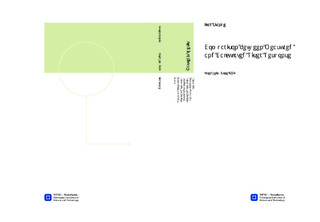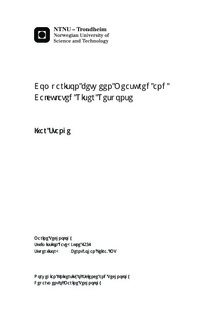| dc.contributor.advisor | Leira, Bernt Johan | nb_NO |
| dc.contributor.author | Stange, Ivar | nb_NO |
| dc.date.accessioned | 2014-12-19T12:07:12Z | |
| dc.date.available | 2014-12-19T12:07:12Z | |
| dc.date.created | 2012-11-08 | nb_NO |
| dc.date.issued | 2012 | nb_NO |
| dc.identifier | 565968 | nb_NO |
| dc.identifier | ntnudaim:7860 | nb_NO |
| dc.identifier.uri | http://hdl.handle.net/11250/238120 | |
| dc.description.abstract | Well intervention operations can inflict large strains on a wellhead. The seabed in the North Sea is very rigid up to the point where the sea water meets the mud or sand. This is one of the reasons why wellheads operating on the Norwegian continental shelf are more exposed to fatigue damage. In search for more oil and the wish to increase the utilization rate of existing wells the oil companies drill more and more, causing more and more fatigue life consumption. The oil companies must provide sufficient documentation that the wellhead always has enough remaining fatigue life to perform a Plug and Abandon (P&A) operation.Full scale measurements has been collected for a marine drilling riser connected to a moored Aker H-3 rig operating on a field with a depth of 325 m. The angles at the bottom of the riser above the lower marine riser package are used to calculate the consumed cumulative fatigue life using rainflow cycle counting and Miner-Palmgren summation.A simulation model has been developed in the computer simulation program RIFLEX, which is a state of the art simulation program developed especially for slender structures such as a riser in a marine environment. The model was built with relatively conservative assumptions. This resulted on fatigue life assessments that gave a shorter operation life than what was found using the full scale measurements. Using such simulation is often the only tool available to document fatigue life consumption since full scale measurement tools are rarely installed and used. It is vital that the simulation yield reliable and correct results and as close to the true result as possible.A series of similar simulation models were developed where we looked at the effect of taking away some of the conservatism in the original model. First we looked at the difference between a JONSWAP wave spectrum and a Torsethaugen wave spectrum. The difference lies in the assumption of that a sea state is a superposition of wind driven waves and swell waves, where the Torsethaugen use empirical data collected from the North Sea to account for the difference. A Torsethaugen is a double-peaked spectrum while the JONSWAP spectrum is a single-peaked spectrum. The difference between the two results gave little or no effect on the motion characteristics and fatigue life.Then we introduce a directional wave spectrum, meaning that waves may be short-crested and spread around a mean wave direction. This reduced the angular motion in terms of standard deviation significantly. The reduction was between 10% - 15%. It also affected the fatigue life positively. In the next model we introduced non-linear behaviour in the lower flex joint while the waves now were unidirectional. In terms of standard deviation the reduction was the same as for the model with wave spreading.In the last comparison model we used both non-linear flex joint behaviour and wave spreading. The total reduction was again significant. For some of the simulation even up to 30% compared to the original model. All the standard deviation from the full scale data has natural variances from data set to data set and most of the computer simulation fell within this margin of error.For all simulation models the model was tested with different mean heading direction of the waves. The mean heading directions were 0 deg, 30 deg, 60 deg and 90 deg relative to the rig. While the full scale measurement had little correlation between the measured response direction and the weather direction, the simulation were very consistent on this matter.Some simulations with current and support vessel offset was performed to find the effect on the standard deviation. While the presence of current damped the angular motion, the standard deviation increased with increasing support vessel offset. A discussion around the uncertainty of the true characteristics of the non-linear model explains some of the behaviour.When comparing fatigue life the calculated fatigue life consumption became closer and closer to the measured value as we removed the conservatism. However, by a closer investigation of the angle range spectra which is used in the Miner-Palmgren summation there was found differences that need more attention. While the angle range spectrum from the full scale measurement show a close to linear relation between numbers of cycles exceeding ranges the shape for the simulated models were far from linear. In terms of the shape parameter in the Weibull distribution it was found through fitting the curve that the shape model for full scale and RIFLEX simulations were around 1.05 and 1.9, respectively.It is this difference in shape that demands a closer investigation of the simulation models. The fact that the fatigue life approached the true fatigue life so closely should so far be regarded as a coincidence and not a result of good model approximations.It was also found that the full scale motion for some of the time series are low frequency dominated, i.e. high energy in oscillating components with a frequency outside the wave spectrum. Some peak periods reach periods over a minute or even two. This is an effect that is unaccounted for in the models presented in this thesis. | nb_NO |
| dc.language | eng | nb_NO |
| dc.publisher | Institutt for marin teknikk | nb_NO |
| dc.subject | ntnudaim:7860 | no_NO |
| dc.subject | MTMART Marin teknikk | no_NO |
| dc.subject | Marin konstruksjonsteknikk | no_NO |
| dc.title | Comparison between Measured and Calculated Riser Response | nb_NO |
| dc.type | Master thesis | nb_NO |
| dc.source.pagenumber | 152 | nb_NO |
| dc.contributor.department | Norges teknisk-naturvitenskapelige universitet, Fakultet for ingeniørvitenskap og teknologi, Institutt for marin teknikk | nb_NO |

